May 30, 2025 | 21:50 GMT +7
May 30, 2025 | 21:50 GMT +7
Hotline: 0913.378.918
May 30, 2025 | 21:50 GMT +7
Hotline: 0913.378.918
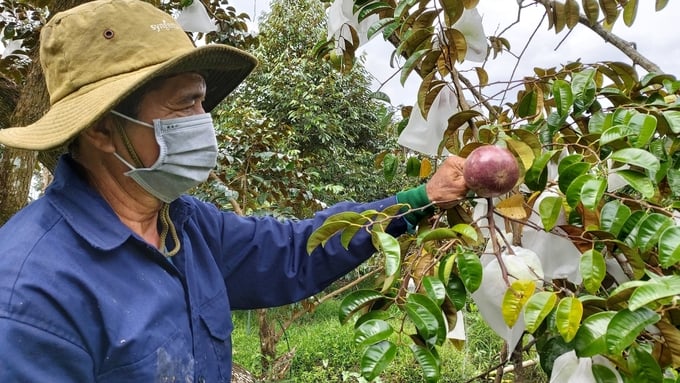
Purple milk breast in Can Tho is one of the commodities with a stable export market. Photo: Kim Anh.
Farmers in Can Tho City have begun to accelerate the transformation of crop structure from inefficient rice land to fruit trees since 2018. By the end of 2022, the city had over 24,500 hectares of fruit trees, mainly mango, durian, longan, plum, etc. Currently, the city's Department of Agriculture and Rural Development has built nearly 10,400 hectares of concentrated fruit tree production areas, with an annual output of over 110,000 tons, to improve the value of products associated with consumption and increase competitive advantage.
Durian is one of the crops with a high export value, bringing farmers an annual profit of VND 200-250 million/ha. In recent years, durian has been invested and developed with an area increasing from 802 hectares (in 2018) to 2,965 hectares (in 2022), mainly in Phong Dien, Thoi Lai, and O Mon districts.
Up to now, the whole city has been granted 52 planting area codes on 25 growing areas with a total area of over 403 hectares and 4 codes for packing facilities in Cai Rang, Ninh Kieu, O Mon, and Binh Thuy districts.
To promote links and consumption of fruit trees, Can Tho has cooperated with more than 8 leading export enterprises in the country to ensure the creation of transparent growing areas, quality products and food safety, meeting the requirements of each enterprise.
According to Mr. Tran Thai Nghiem, Deputy Director of the City Department of Agriculture and Rural Development, the association between cooperatives and businesses is crucial to the sustainable development of the city's fruit tree industry. Mr. Nghiem set out the task of linking farmers and cooperatives with companies as a fundamental solution to improve the value of this product.

Mr. Nguyen Dinh Muoi, Deputy General Director of Vina T&T Import-Export Trading Service Co., Ltd, wishes to build a sustainable, long-term relationship with the cooperative. Photo: Kim Anh.
With the associated enterprise, Mr. Nghiem must ensure the output and quality of each shipment. Not to put much expectation on the theoretical point of view, the business needs to make specific requirements on specific quantity and quality demand of each type of fruit tree. On that basis, the agricultural sector will have a production orientation based on the strengths of each locality to meet the needs of businesses.
Representative of Vina T&T Import-Export Trading Service Co., Ltd, a traditional Ho Chi Minh City fruit export enterprise. In Can Tho, Mr. Nguyen Dinh Muoi, Deputy General Director, said that the market price is currently fluctuating, and enterprises have linked with foreign partners to agree on prices. However, when market prices spiked, traders pushed high prices to buy goods, making the connection between cooperatives and businesses difficult.
Mr. Muoi said that it is necessary to unify the view of a sustainable, long-term association, to come to a stable price so that farmers can keep sustainable profits and harmonize interests in the link between businesses and farmers. Because the market price rises quickly but also falls very quickly, farmers will be directly affected.
Mr. Ngo Van Chanh, the representative of Chanh Thu Fruit Import-Export Co., Ltd., also said that products according to the process of the import market would help the cooperative build a sustainable market. From 2022 to now, the consumer market for durian products has been active. This business wants farmers to focus on product quality to maintain the market.
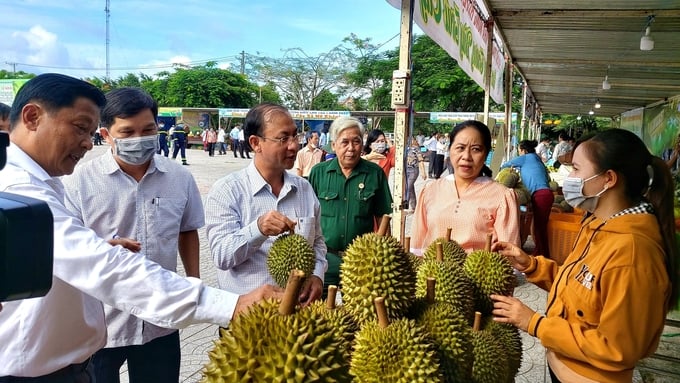
In recent years, thanks to the investment and development of the durian area in Can Tho increased sharply from 802 hectares (in 2018) to 2,965 hectares (in 2022). Photo: Kim Anh.
Currently, Can Tho have nearly 50 cooperative groups and cooperatives wishing to associate and consume fruit products, with a total area of about 945 hectares, focusing mainly on the following items: Ido longan, breast milk, durian, mango, Seedless lemons, plums... Derived from the requirements of quality and maintaining the sustainable connection of businesses, many fruit cooperatives in the city agreed and were well aware of producing quality products to sell at a high price, thereby increasing profits.
In addition, some gardeners believe that associated enterprises need to coordinate, support and advise cooperatives on techniques and specific standards requirements of markets because the products produced by farmers are also products of the business, thus building a stronger connection.
Mr. Le Thanh Tung, Deputy Director of the Department of Crop Production (Ministry of Agriculture and Rural Development), gave a general picture of the country's fruit tree industry, which currently has about 1 million hectares, an output equivalent to 20 million tons of fruit. There are 16 main types of fruit trees, which are vigorously exported to markets: China, Korea, and Japan... with an export value of about US$ 3.5 billion/year.
Although it is not a locality that has the strength to develop fruit trees, with the investment, application of science and technology, and agricultural by-products, fruit trees have become a key industry of many localities, with about 350,000 ha. Mr. Tung assessed that cooperatives are the foundation for enterprises to build raw material areas. Practical experience from countries around the world, if you want to consume agricultural products, you must go through cooperatives and plant trees where the priority is to develop cooperatives there.
Translated by Ha Phuc
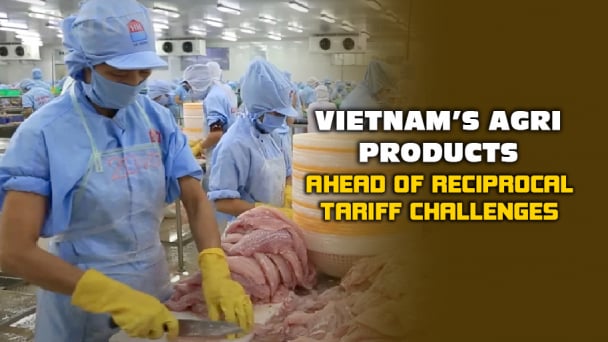
(VAN) Reciprocal tariffs are exerting pressure on U.S. exports, prompting Vietnamese firms to shift their focus to Muslim markets, Thailand, and Brazil.
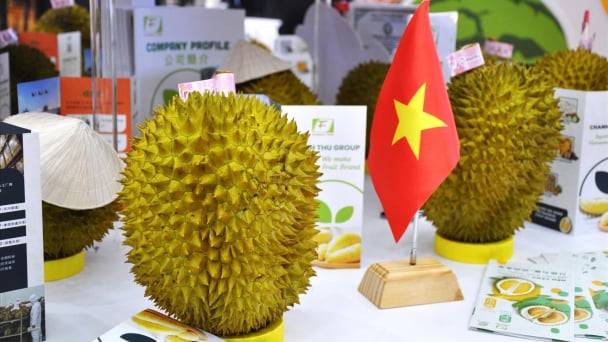
(VAN) A free booth for two years at Xinfadi, Beijing's largest wholesale market, will be allocated to Vietnam's agricultural products.
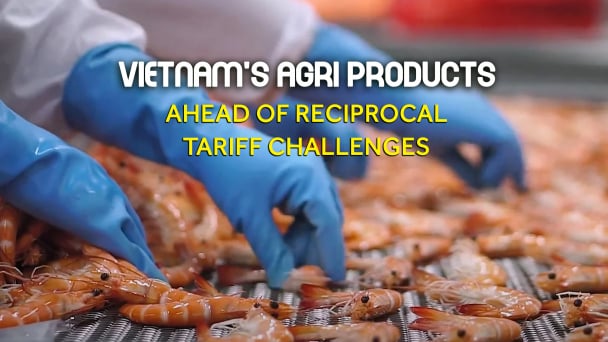
(VAN) Vietnamese shrimp exporters are actively looking for alternative markets and accelerating shipments to the United States in response to the pressure of impending reciprocal tariffs. This is occurring during a temporary tariff suspension.
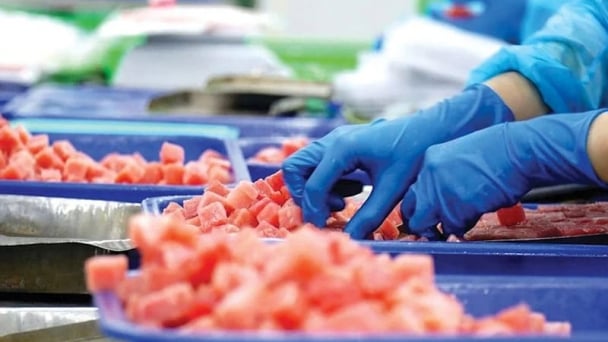
(VAN) The import-export turnover between Vietnam and Singapore rose amid a trade rebound, with machinery, electrical equipment, and fuels making up the majority of the transaction value.

(VAN) Director General of the General Administration of Customs of China, Ms. Sun Mai Jun, has pledged to implement measures that will ease the import process for Vietnamese agricultural products.
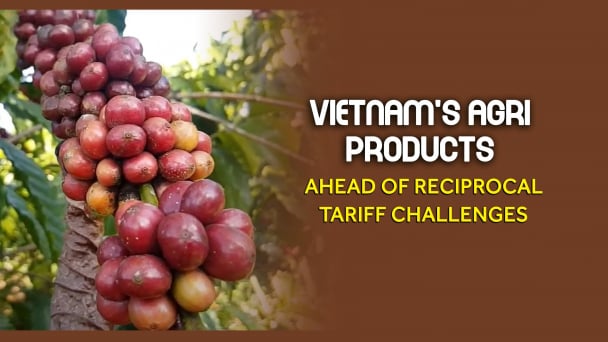
(VAN) Although Vietnam is still increasing its coffee exports, the industry is currently in the process of determining market strategies in response to the U.S. imposition of reciprocal tariffs.

(VAN) With rising demand in Muslim-majority countries, Halal certification is becoming a critical passport for Vietnamese agricultural products seeking sustainable market access and consumer trust in the Middle East and Africa.